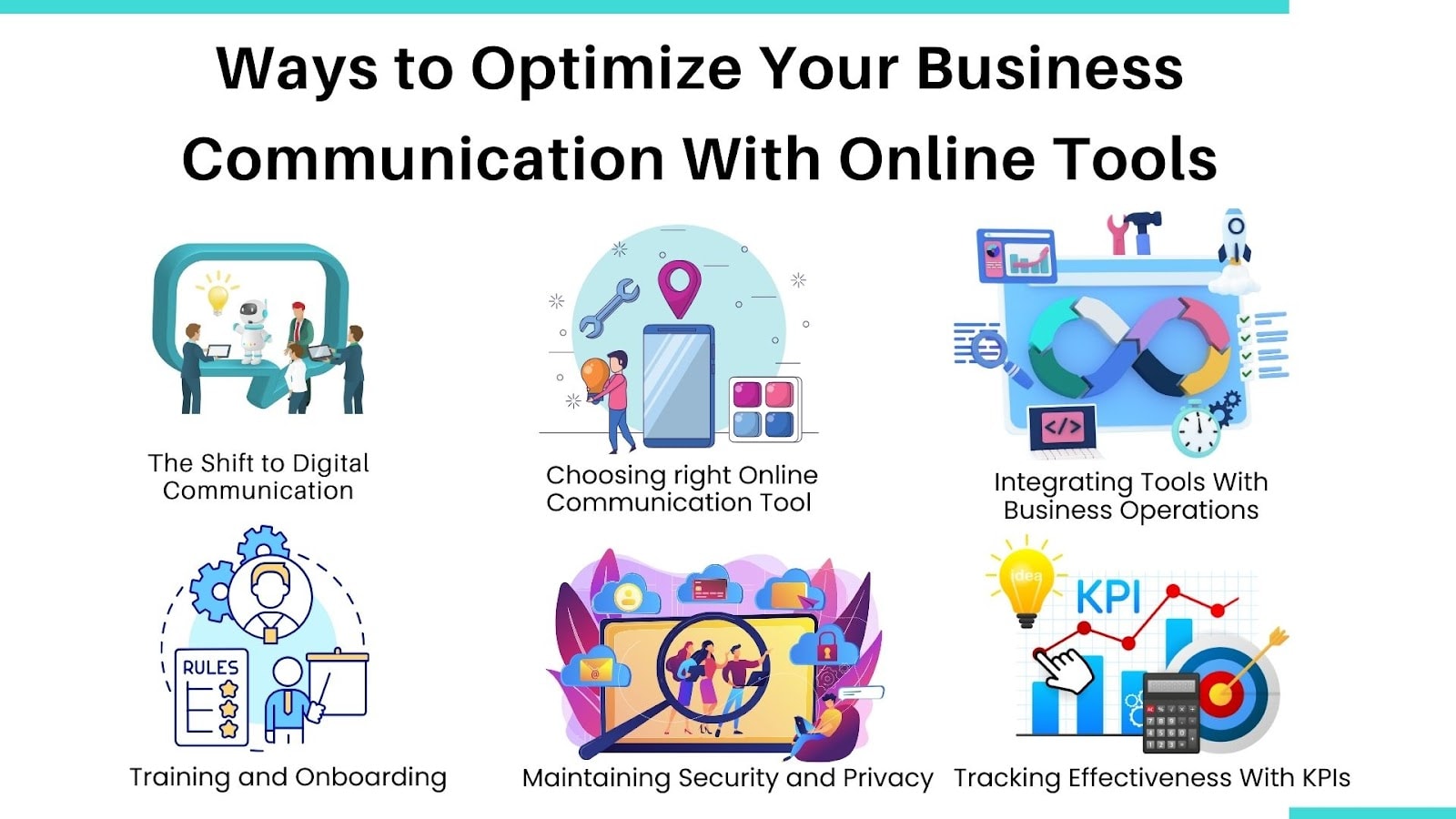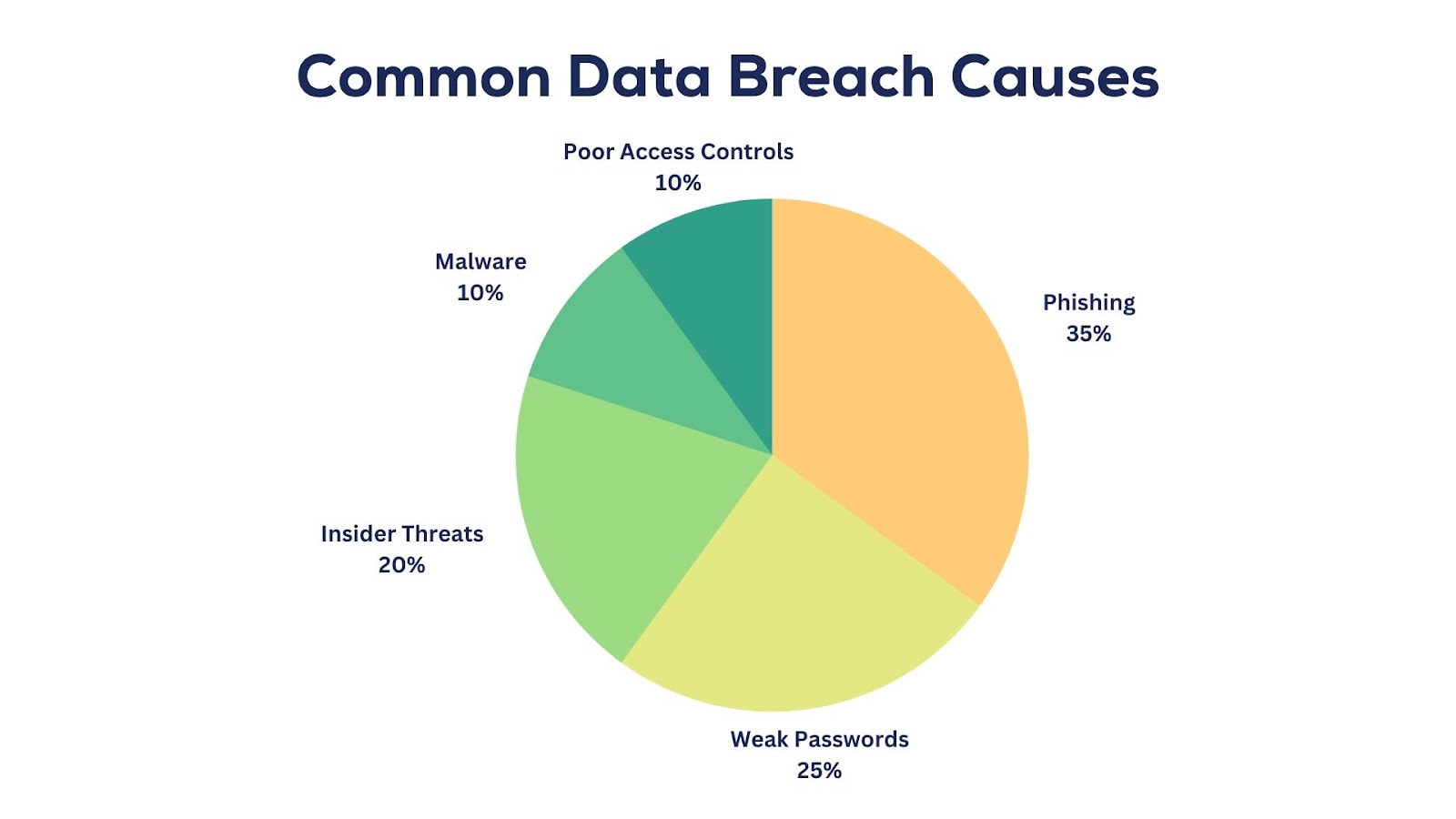Note: This is a guest post written by Dan Martin – The rise of remote work and digital transformation has radically changed how businesses communicate. With global retail e-commerce sales projected to account for over 24% of total retail sales by 2027, the shift toward online platforms is accelerating. In this digital-first world, choosing the right communication tools and optimizing them for effectiveness is crucial.
This article explores 7 ways your business can leverage online tools to enhance communication.

1. The Shift to Digital Communication
The COVID-19 pandemic necessitated remote work for many businesses. Even as we transition back to the office, Hybrid or remote-first policies are becoming the norm. With employees spread across locations, making use of practical digital communication tools is essential.
Stats show the extent of our reliance on digital channels:
- E-commerce made up nearly 19% of retail sales worldwide in 2022. This is a significant increase from just 5.8% in 2014, highlighting the rapid shift to online shopping.
- By the end of 2021, 45% of Malaysians made weekly mobile purchases. Mobile commerce is disrupting shopping behaviors, especially in Asia, where smartphone penetration is high.
- 82% of company leaders surveyed allow remote work to some extent. 60% Permit hybrid arrangements.
As businesses continue their digital transformation journey, the need for streamlined and efficient communication tools becomes increasingly evident. Traditional siloed solutions are no longer sufficient in today’s fast-paced digital landscape. Integrated, cloud-based communication tools that cater to remote work environments are now essential for productivity and collaboration.
One significant step toward achieving this synergy is by integrating Telegram and WhatsApp into your communication ecosystem. This integration can empower your team to communicate seamlessly and effectively across different platforms, breaking down barriers and ensuring fluid information exchange. Connecting a Telegram WhatsApp integration could enhance your team’s ability to communicate effectively across different platforms. Telegram excels in administration, while WhatsApp shines in instant customer communication. Integrate both for streamlined admin and instant messaging in one go.
2. Choosing the Right Online Communication Tool
With countless tools, how do you choose what’s best for your business? Here are vital factors to consider:
Scalability
As your business grows, your communication needs change. Look for tools that can scale with your evolving needs. Cloud-based tools that offer unlimited storage and user accounts make scaling easier.
Security
Data breaches can cripple a business. Prioritize tools with enterprise-grade security like two-factor authentication and end-to-end encryption for communication security.
User-Friendliness
Complex tools with steep learning curves lower employee adoption. Opt for intuitive tools with little training needed. Mobile compatibility is a must to enable communication on the go.
Popular tools like Zoom, Slack, and Microsoft Teams tick many boxes. Evaluate them against your business goals to pick the right fit.
3. Integrating Tools With Business Operations
The real challenge begins after selection. Integrating these tools into workflows to align with your business objectives is vital for long-term communication efficiency.
- Set guidelines on which tools to use for what forms of communication. For example, Slack for quick updates and Teams for structured status meetings.
- Automate repetitive communication tasks like meeting summaries and status reports to save time.
- Ensure your tools work cohesively. If you use Asana for task management, set up integration with Slack for instant notifications.
4. Training and Onboarding for Success
The best tools fail without proper onboarding. Here are some tips for ensuring teams adopt new communication systems:
- Conduct hands-on training sessions and provide video tutorials where possible. Documentation alone is rarely sufficient – interactive learning works best.
- Have new hires shadow team members and learn communication protocols through observation. Let them try basic tasks under supervision.
- Incentivize usage through gamification. Set team targets for adoption and reward the best performers.
- Closely track usage metrics and gather feedback through surveys and meetings. Refine processes regularly based on insights gained.
- Managers should enthusiastically embrace and actively use the tools. Their engagement sets the tone for the broader team.
But don’t go overboard with rigid guidelines. Leave room for spontaneity and experimentation to develop innovative practices. Be open to ideas from your employees as well.
5. Maintaining Security and Privacy

Digital communication comes with risks like phishing, DDoS attacks, and data leaks. Some best
practices include:
- Use secure networks and reputable cloud hosting providers
- Install antivirus/anti-malware software on all devices. Keep them updated
- Enable two-factor or multi-factor authentication wherever possible
- Create access roles and limit employee permissions to minimize insider threats
- Communicate policies on acceptable use of company communication channels
For privacy protection:
- Classify data by sensitivity and allow access accordingly
- Use encryption, firewalls, and VPNs to secure sensitive data
- Anonymize customer data used for analytics
- Ensure GDPR and Privacy Shield compliance
6. Tracking Effectiveness With KPIs
To refine your approach, diligently track KPIs like
- Employee adoption rate – What percentage of employees actively use each tool?
- Email open rates – Are your messages being read?
- Meeting participation – How many employees regularly participate in online meetings?
- Project velocity – How has communication efficiency impacted project delivery timelines?
- Customer query resolution time – How quickly are issues resolved after initial engagement?
Leverage built-in analytics in your tools and deploy software like Google Analytics, Mixpanel, and Amplitude to gain insights. Seek qualitative feedback through surveys and meetings. Keep optimizing until your communication processes are seamless.
7. Future of Business Communication
The pandemic provided a glimpse into the future of workplace communication. As virtual collaboration becomes commonplace, we can expect to see the following:
- Wider adoption of AR/VR to enable 3D hologram meetings, immersive conferences, and interactive training simulations.
- Integrating AI and ML for automating meeting transcriptions, translations, calendar scheduling, and other administrative tasks.
- Use blockchain technology to establish decentralized, tamper-proof methods for sensitive data sharing between organizations.
- Rise of unified business messaging platforms like WeChat to bring together communication tools under one roof.
- 5G and WiFi 6 fueling high-bandwidth video calls, streaming, and data sharing.
The next wave of innovations will redefine business communication. Forward-looking companies are getting ready by optimizing processes now. Evaluating tools like hologram conferencing, quantum-secured networks, AI analytics, etc., will prepare you for the future.
Frequently Asked Questions
What are some risks of ineffective communication tools?
Ineffective tools that don’t align with workflows cause frustration and hamper productivity. They can also expose businesses to cyber threats and data leaks due to a lack of security features.
How can managers encourage the adoption of new tools?
Managers play a crucial role and must set an example by actively using the tools. They can incentivize teams through friendly competitions and highlight efficiencies gained through regular feedback sessions.
Which business functions benefit the most from smooth online communication?
Customer-facing teams like sales, marketing, and support see dramatic improvements in engagement and satisfaction rates. Collaboration-heavy functions like product development also benefit greatly.
When does a business know it’s time to evaluate new communication tools?
Indicators include declining productivity, employee complaints about ineffective tools, increased cybersecurity risks, and lack of scalability for growing teams. Be proactive about reviewing your tech stack periodically to prevent being caught off guard.
Key Takeaways
Effective communication is at the heart of any successful business. In today’s digital world, online tools provide immense opportunities to collaborate seamlessly across teams and locations. By picking the right solutions, integrating them intelligently with workflows, and training employees, businesses can transform their communication to gain a competitive edge.






